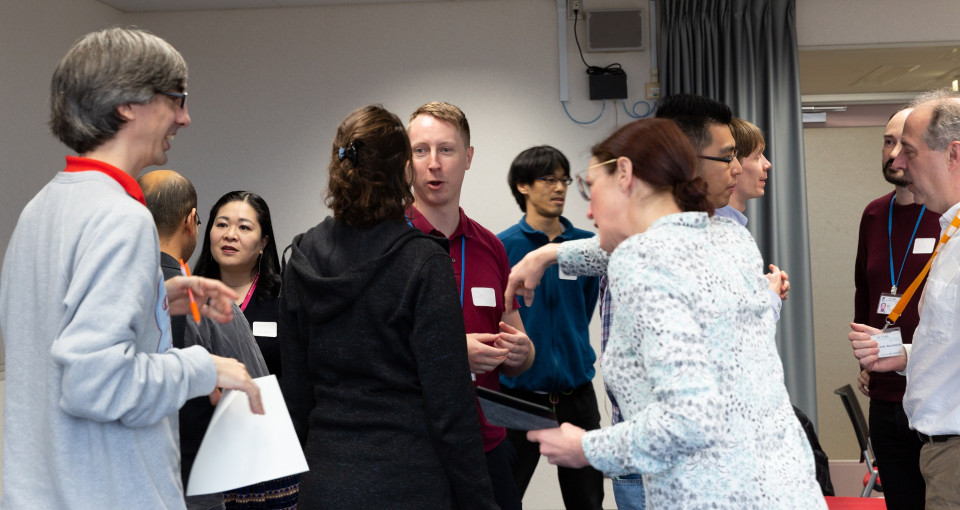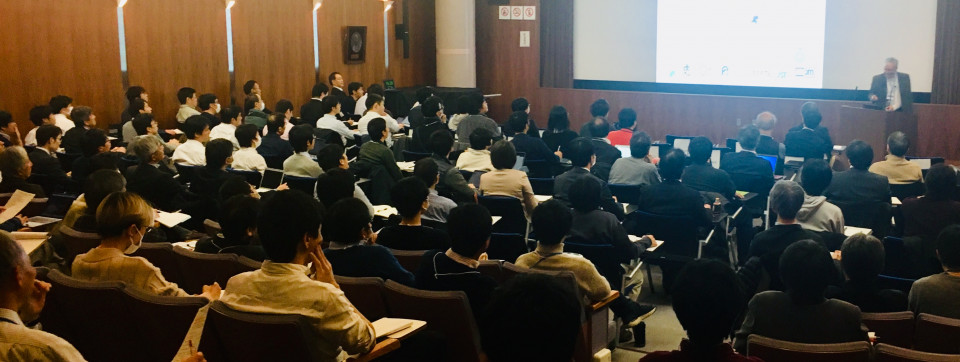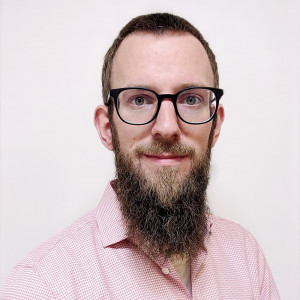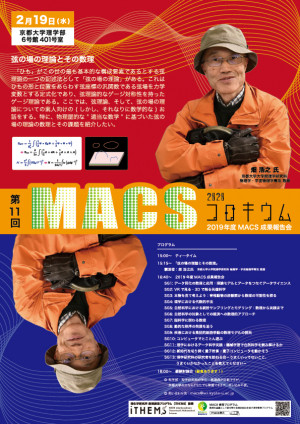Volume 88
Back to Newsletter List
Hot Topic
Workshop on Communication for Interdisciplinary Collaboration
2020-02-04
On January 28th, iTHEMS member Don Warren co-hosted a workshop on Communication for Interdisciplinary Collaboration. The goals of this workshop were (1) to learn how to communicate with people who do not study the same topic you do, and (2) to practice explaining your work so that a non-expert can decide if they want to join your project. The workshop was open to all RIKEN staff in all fields and positions, and turnout was very good: scientists from multiple centers attended, as did several non-research staff.
Everyone who attended learned two key points to make cross-discipline communication easier and more productive. First, listen actively when someone is talking about their work to you; don’t fixate on the first interesting thing and stop listening to the rest of their explanation. Second, K.I.S.S.—keep it short and simple! (It is easy to talk about what to do, but it was much harder to practice it during the workshop.)
The workshop facilitator was Christiane Brew, a performer and trainer who uses techniques from improvisation to encourage open discussion, deep listening, and clear “pitching”. This was the second of two workshops organized in FY2019 by Don and Amanda Alvarez of CBS. Support for the workshop came from the RIKEN Collaboration Seed fund.
If this workshop is repeated next year, please consider joining and practicing your communication skills so you will be ready to start on your next interdisciplinary collaboration.
Hot Topic
Summary of interdisciplinary workshop "Present and Future of the Quantum Computing (QC)"
2020-01-31
Interdisciplinary workshop "Present and Future of the Quantum Computing (QC)" hosted by MEXT and sponsored by iTHEMS and CEMS was held on Jan.29, 2020 at RIKEN Suzuki Umetaro Hall. There were more than 170 people got together from academia, industries and publishers. For the people who could not enter the hall, the talks were also broadcasted to the iTHEMS room 160. The scientific session was started with a review talk on the history of quantum-bit researches by Yasunobu Nakamura (CEMS). It was then followed by 11 talks which covered wide topics ranging from the QC architecture development to QC algorithms. The very last talk was given by our iTHEMS colleague, Jason Chang (iTHEMS/UCB), who discussed the adiabatic quantum computing and possible near-term engineering applications on the basis of his recent QC works. A poster session with about 30 posters from many different areas of science was also held with very lively discussions, especially among young researchers. Since the meeting was so successful to provide a platform for the researchers interested in this growing field of QC, we will definitely have the 2nd meeting in the near future.
Workshop on quantum information science
January 29 (Wed) 10:00 - 18:00, 2020
Seminar Report
ABBL-iTHEMS Joint Seminar by Dr. Hajime Sotani
2020-01-31
As ABBL/iTHEMS seminars, Dr. Hajime SOTANI gave a talk about "Neutron stars and nuclear saturation parameters" on 24th January. So far, many equations of state (EOSs) for neutron star matter are proposed, but the EOS is not fixed yet. This is mainly because the difficulty to obtain the information for high density region via terrestrial experiments. Thus, as an inverse problem, neutron stars are a suitable laboratory for probing the nuclear properties in the high density region. In this talk, it has been discussed the possibility for constraining the nuclear saturation parameters via the neutron star observations, especially focusing on the low-mass neutron stars. Any EOSs can be expanded in the vicinity of the saturation point as a function of the baryon number density, where the expansion coefficients correspond to the saturation parameters. So, each EOS has an own set of saturation parameters. Among the saturation parameters, the incompressibility (K0) for symmetric nuclear matter and the so-called slope parameter (L) for pure neutron matter are relatively difficult to constrain, because these are a kind of the derivative around the saturation point. Thus, in particular these two saturation parameters have been focused in this talk. In addition, the EOSs for high density region can not be expressed well only with the saturation parameters, but one may be able to discuss the EOSs with the saturation parameters up to twice the saturation density. In practice, by systematically examining the masses of low-mass neutron stars constructed with various EOSs up to twice the saturation density, the suitable combination of K0 and L for expressing well the low-mass neutron stars has been found successfully, i.e., eta^3 = (K0 * L^2). That is, the neutron star mass and gravitational redshift can be expressed well as a function of eta and the stellar central density. This is suggested that the value of eta and central density could be constrained via the simultaneous observations of neutron star mass and gravitational redshift. Furthermore, using eta, the possible maximum mass of neutron stars has been discussed together with the constraint obtained from the gravitational wave event, GW170817, and NICER observation.
ABBL/iTHEMS seminar - talk on neutron stars
January 24 (Fri) 14:00 - 15:00, 2020
Upcoming Events
Seminar
iTHEMS Math Seminar
Solved and open problems regarding the neighborhood grid data structure
February 7 (Fri) 16:00 - 18:10, 2020
Martin Skrodzki (Visiting Scientist, RIKEN Interdisciplinary Theoretical and Mathematical Sciences Program (iTHEMS) / Fellow, German Academic Scholarship Foundation, Germany)
February 7 at 16:00-17:00 17:10-18:10, 2020
In 2009, Joselli et al. introduced the neighborhood grid data structure for fast computation of neighborhood estimates for point clouds in arbitrary dimensions. Even though the data structure has been used in several applications and was shown to be practically relevant, it is theoretically not yet well understood even in the two-dimensional case. The purpose of this talk is to present the data structure, give a time-optimal building algorithm, and motivate several associated questions from enumerative combinatorics as well as low-dimensional (probabilistic) geometry. In case of questions that have been solved in the past, corresponding proofs will be provided. For the open question, the talk will list them as an outlook to possible future collaboration.
Venue: Seminar Room #160, 1F Main Research Building, RIKEN
Event Official Language: English
Seminar
DMWG Seminar
Mining for Dark Matter substructure: Learning from lenses without a likelihood
February 17 (Mon) 14:00 - 15:30, 2020
Johann Brehmer (Postdoctoral Researcher, New York University, USA)
Dr. Brehmer gives us a talk about a method to deduce DM small structures. Please join us!
The subtle imprint of dark matter substructure on extended arcs in strong lensing systems contains a wealth of information about the small-scale distribution of dark matter and, consequently, about the underlying particle physics. However, teasing out this effect is challenging since the likelihood function for realistic simulations of population-level parameters is intractable. Structurally similar problems appear in many other scientific fields ranging from particle physics to neuroscience to epidemiology, which has prompted the development of powerful simulation-based inference techniques based on machine learning. We give a broad overview over these methods, and then apply them to the problem of substructure inference in galaxy-galaxy strong lenses. In this proof-of-principle application to simulated data, we show that these methods can provide an efficient and principled way to simultaneously analyze an ensemble of strong lenses, and can be used to mine the large sample of lensing images deliverable by near-future surveys for signatures of dark matter substructure.
Venue: #424-426, Main Research Building, RIKEN Wako Campus
Event Official Language: English
Colloquium
MACS ColloquiumSupported by iTHEMSSUURI-COOL (Kyoto)
The 11st MACS Colloquium
February 19 (Wed) 15:00 - 17:30, 2020
Hiroyuki Hata (Professor, Graduate School of Science, Kyoto University)
15:00- Teatime
15:15- Talk by Prof. Hiroyuki Hata
16:40- MACS Report Meeting FY2019
The 11th MACS colloquium is supported by iTHEMS. It will be broadcasted to Wako, but if you can join the colloquium physically in Kyoto, that would be better. iTHEMS provides good confectionery at Kyoto!
Venue: Lecture room #401, Graduate School of Science Building No 6, Kyoto University
Event Official Language: Japanese
Seminar
iTHEMS Math Seminar
Index of the Wilson-Dirac operator revisited: a discrete version of Dirac operator on a finite lattice
February 25 (Tue) 16:00 - 18:10, 2020
Mikio Furuta (Professor, The University of Tokyo)
The Wilson-Dirac operator is a discrete version of Dirac operator defined on regular lattices. When the discrete version is a fine approximation of the Dirac operator on a Z/2-graded Clifford module on a torus, it is known that (1) an integer-valued index is defined for the Wilson-Dirac operator, and (2) the index is equal to the Atiyah-Singer index of the Dirac operator on the torus.
These have been well established up to around 2000. The strategy of all the previous works is to make use of the discrete version of the heat kernel for Neuberger's overlap Dirac operator. Therefore the strategy cannot be generalized to mod 2 index nor family version of index.
In this talk I would like to explain a new approach to the index of Wilson-Dirac operator which can be immediately generalized to these various cases.
Joint work with H. Fukaya, S. Matsuo, T. Onogi, S. Yamaguchi and M. Yamashita.
Venue: Seminar Room #160, 1F Main Research Building, RIKEN
Event Official Language: English
If you would like to cancel your subscription or change your email address,
please let us know via our contact form.
Copyright © iTHEMS, RIKEN. All rights reserved.







